
How to Use Buck Converter LM2596s : Examples, Pinouts, and Specs
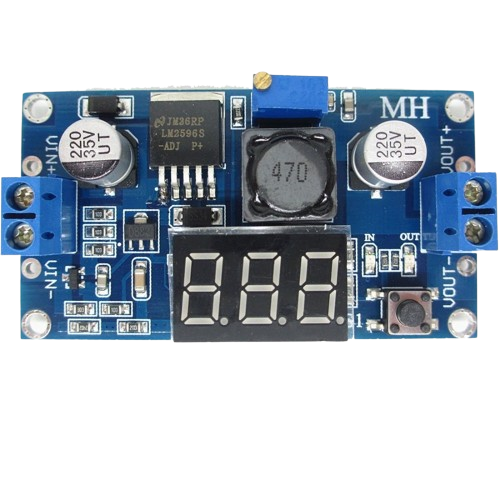
 Design with Buck Converter LM2596s in Cirkit Designer
Design with Buck Converter LM2596s in Cirkit DesignerIntroduction
The LM2596S is a step-down (buck) voltage regulator designed to efficiently convert a higher input voltage to a lower output voltage. It is widely used in power supply applications due to its high efficiency, compact size, and ability to handle up to 3A of output current. The LM2596S features an adjustable output voltage, making it versatile for various electronic projects and devices.
Explore Projects Built with Buck Converter LM2596s
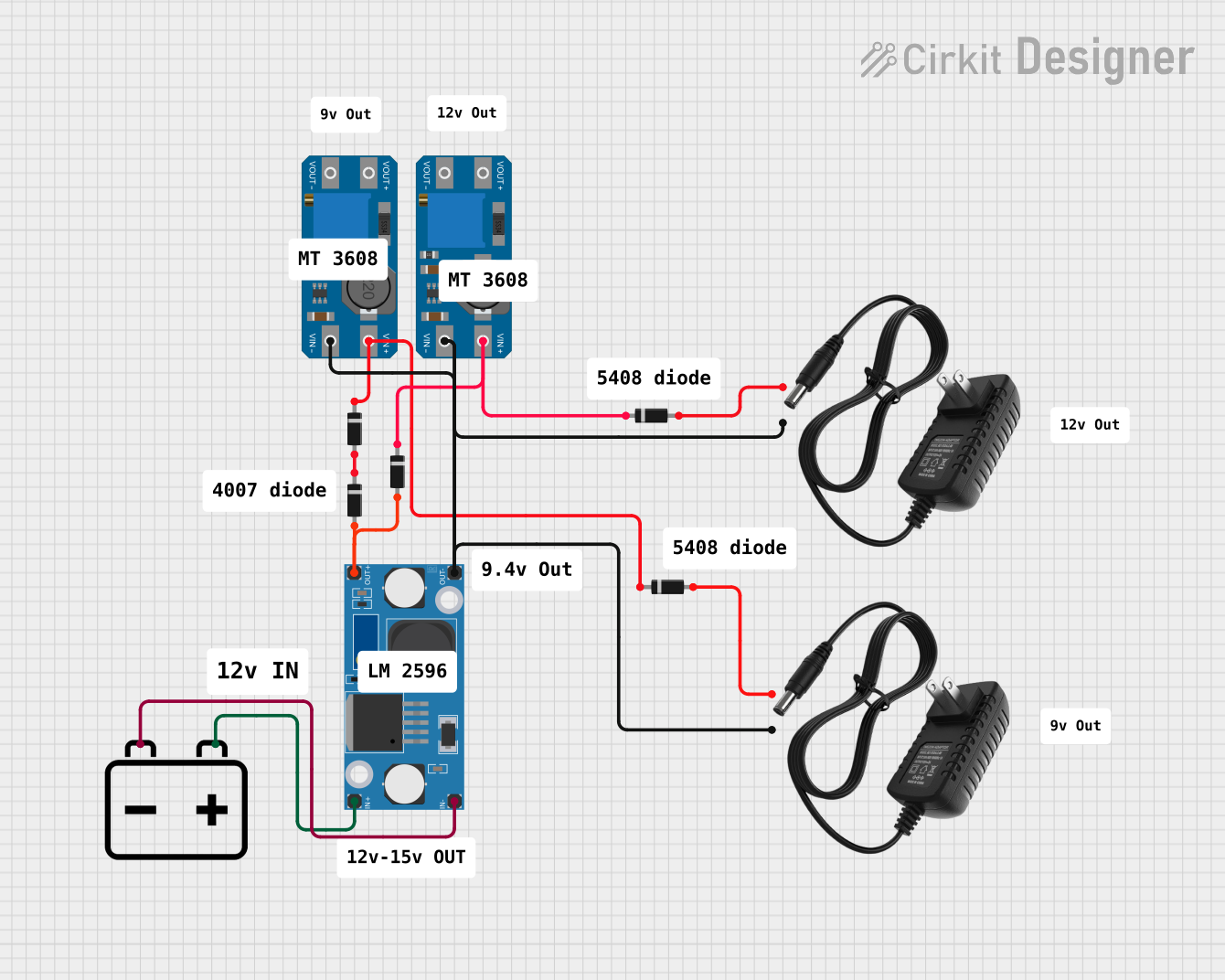
 Open Project in Cirkit Designer
Open Project in Cirkit Designer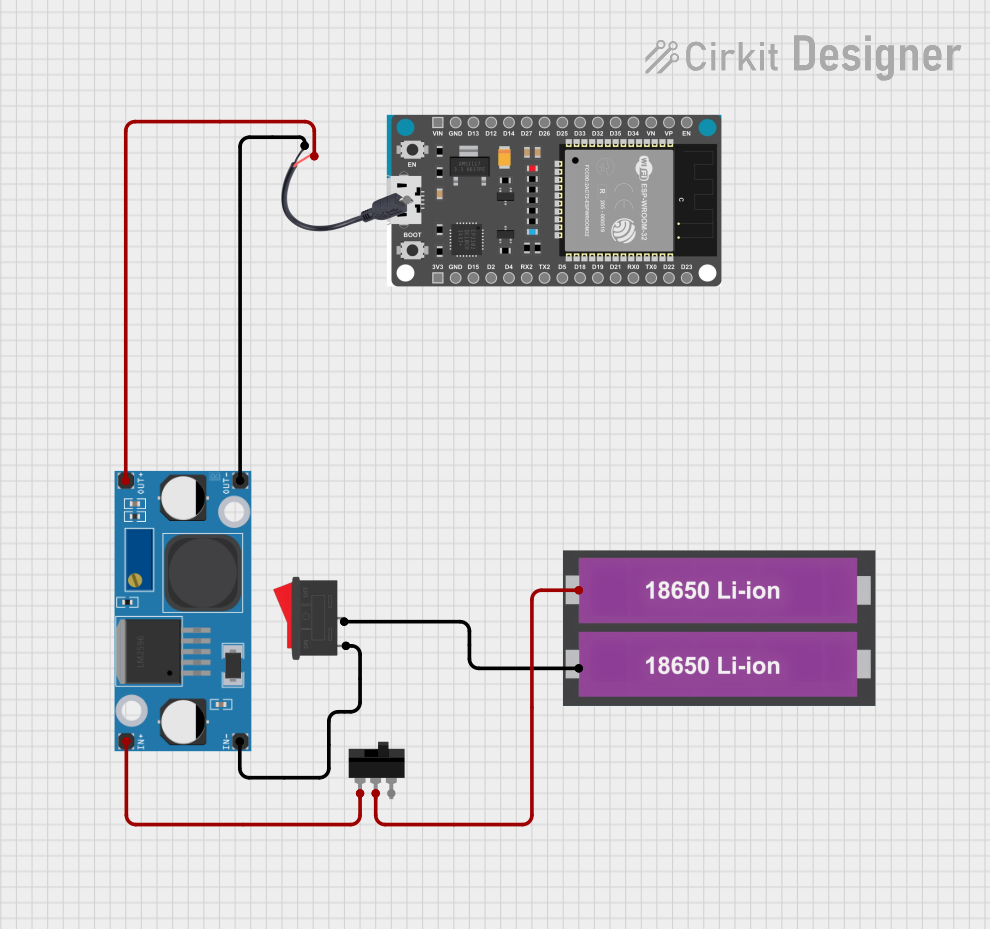
 Open Project in Cirkit Designer
Open Project in Cirkit Designer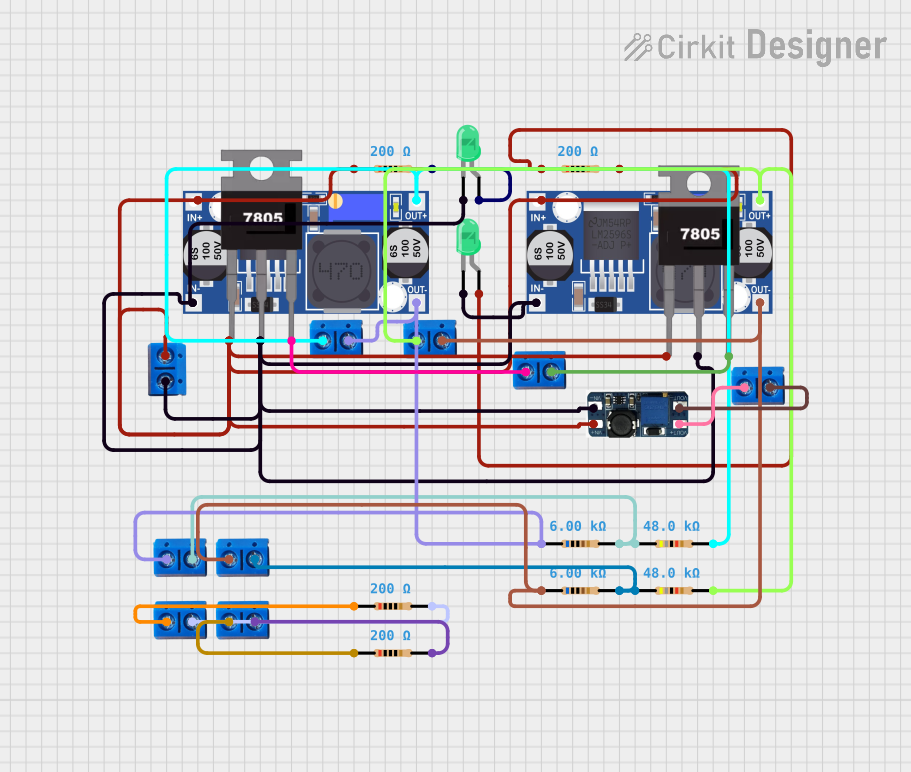
 Open Project in Cirkit Designer
Open Project in Cirkit Designer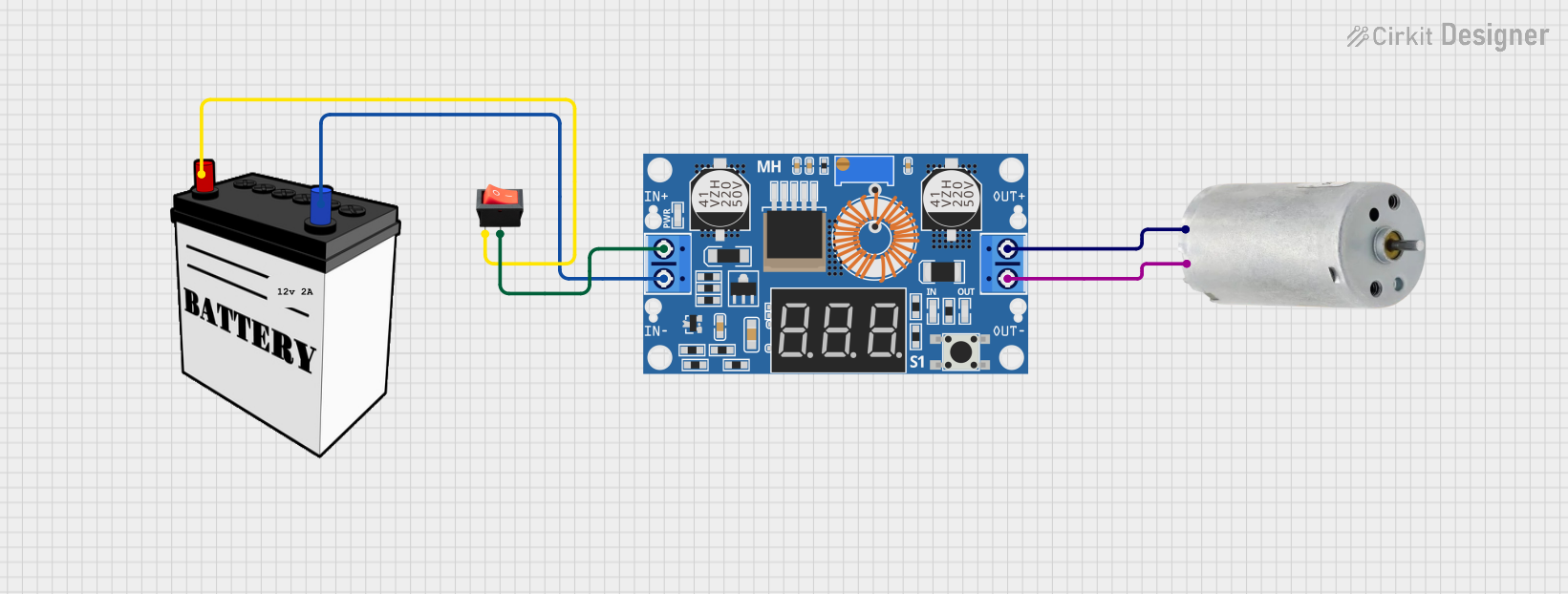
 Open Project in Cirkit Designer
Open Project in Cirkit DesignerExplore Projects Built with Buck Converter LM2596s

 Open Project in Cirkit Designer
Open Project in Cirkit Designer
 Open Project in Cirkit Designer
Open Project in Cirkit Designer
 Open Project in Cirkit Designer
Open Project in Cirkit Designer
 Open Project in Cirkit Designer
Open Project in Cirkit DesignerCommon Applications and Use Cases
- Powering microcontrollers and development boards (e.g., Arduino, Raspberry Pi)
- Battery-powered devices requiring regulated voltage
- LED drivers and lighting systems
- Industrial and consumer electronics
- DIY electronics projects requiring efficient voltage regulation
Technical Specifications
Below are the key technical details of the LM2596S buck converter:
| Parameter | Value |
|---|---|
| Input Voltage Range | 4.5V to 40V |
| Output Voltage Range | 1.23V to 37V (adjustable) |
| Maximum Output Current | 3A |
| Efficiency | Up to 92% |
| Switching Frequency | 150 kHz |
| Output Voltage Ripple | ≤ 30 mV |
| Operating Temperature | -40°C to +125°C |
| Package Type | TO-220-5 or TO-263-5 |
Pin Configuration and Descriptions
The LM2596S has five pins, as described in the table below:
| Pin Number | Pin Name | Description |
|---|---|---|
| 1 | VIN | Input voltage pin. Connect to the unregulated DC input voltage. |
| 2 | Output | Regulated output voltage pin. Connect to the load. |
| 3 | Ground (GND) | Ground pin. Connect to the negative terminal of the input and output circuits. |
| 4 | Feedback | Feedback pin. Used to set the output voltage via an external resistor divider. |
| 5 | ON/OFF | Enable pin. Connect to GND to disable the regulator or leave floating to enable. |
Usage Instructions
How to Use the LM2596S in a Circuit
- Input Voltage: Connect the input voltage (4.5V to 40V) to the VIN pin. Ensure the input voltage is higher than the desired output voltage by at least 1.5V for proper regulation.
- Output Voltage Adjustment: Use a resistor divider network connected to the Feedback pin to set the desired output voltage. The output voltage can be calculated using the formula: [ V_{OUT} = V_{REF} \times \left(1 + \frac{R1}{R2}\right) ] where ( V_{REF} ) is 1.23V, and ( R1 ) and ( R2 ) are the resistors in the divider.
- Output Capacitor: Place a low-ESR capacitor (e.g., 100 µF) at the output to reduce voltage ripple.
- Input Capacitor: Add a capacitor (e.g., 100 µF) at the input to stabilize the input voltage.
- Inductor Selection: Choose an inductor with a current rating higher than the maximum load current and an appropriate inductance value (e.g., 33 µH to 100 µH).
- Enable Pin: Leave the ON/OFF pin floating to enable the regulator or connect it to GND to disable it.
Example Circuit
Below is a typical application circuit for the LM2596S:
VIN (4.5V-40V) ----+----[Input Capacitor]----+---- VIN (Pin 1)
| |
[Inductor] [GND]
| |
VOUT (Pin 2) ----[Output Capacitor]---- Load
Using LM2596S with Arduino UNO
The LM2596S can be used to power an Arduino UNO by stepping down a higher voltage (e.g., 12V) to 5V. Connect the output of the LM2596S to the Arduino's 5V pin and GND.
Example Code for Arduino
If you are using the LM2596S to power sensors or modules, here is an example Arduino code to read a sensor value:
// Example: Reading an analog sensor powered by LM2596S
const int sensorPin = A0; // Sensor connected to analog pin A0
int sensorValue = 0; // Variable to store the sensor reading
void setup() {
Serial.begin(9600); // Initialize serial communication at 9600 baud
}
void loop() {
sensorValue = analogRead(sensorPin); // Read the sensor value
Serial.print("Sensor Value: ");
Serial.println(sensorValue); // Print the sensor value to the Serial Monitor
delay(1000); // Wait for 1 second before the next reading
}
Important Considerations and Best Practices
- Heat Dissipation: The LM2596S can generate heat under high load conditions. Use a heatsink or ensure proper ventilation to prevent overheating.
- Input Voltage Margin: Ensure the input voltage is at least 1.5V higher than the desired output voltage for stable operation.
- Output Ripple: Use low-ESR capacitors to minimize output voltage ripple.
- Inductor Selection: Choose an inductor with a suitable current rating and inductance value to ensure efficient operation.
Troubleshooting and FAQs
Common Issues and Solutions
No Output Voltage
- Check the input voltage. Ensure it is within the specified range (4.5V to 40V).
- Verify the connections, especially the VIN, GND, and Output pins.
- Ensure the ON/OFF pin is not connected to GND (disabling the regulator).
Output Voltage is Incorrect
- Verify the resistor divider network connected to the Feedback pin. Ensure the resistor values are correct.
- Check for loose or faulty connections in the circuit.
Excessive Heat
- Ensure the load current does not exceed 3A.
- Use a heatsink or improve ventilation around the LM2596S.
High Output Ripple
- Use low-ESR capacitors at the input and output.
- Verify the inductor value and ensure it is appropriate for the load.
FAQs
Q: Can the LM2596S be used to power a 5V device from a 12V source?
A: Yes, the LM2596S can step down 12V to 5V. Adjust the resistor divider network to set the output voltage to 5V.
Q: What is the maximum current the LM2596S can handle?
A: The LM2596S can handle up to 3A of output current, provided proper heat dissipation is ensured.
Q: Can I use the LM2596S with a battery as the input source?
A: Yes, the LM2596S can be used with a battery as long as the input voltage is within the 4.5V to 40V range.
Q: How do I reduce noise in the output voltage?
A: Use low-ESR capacitors and ensure proper grounding in your circuit to minimize noise and ripple.